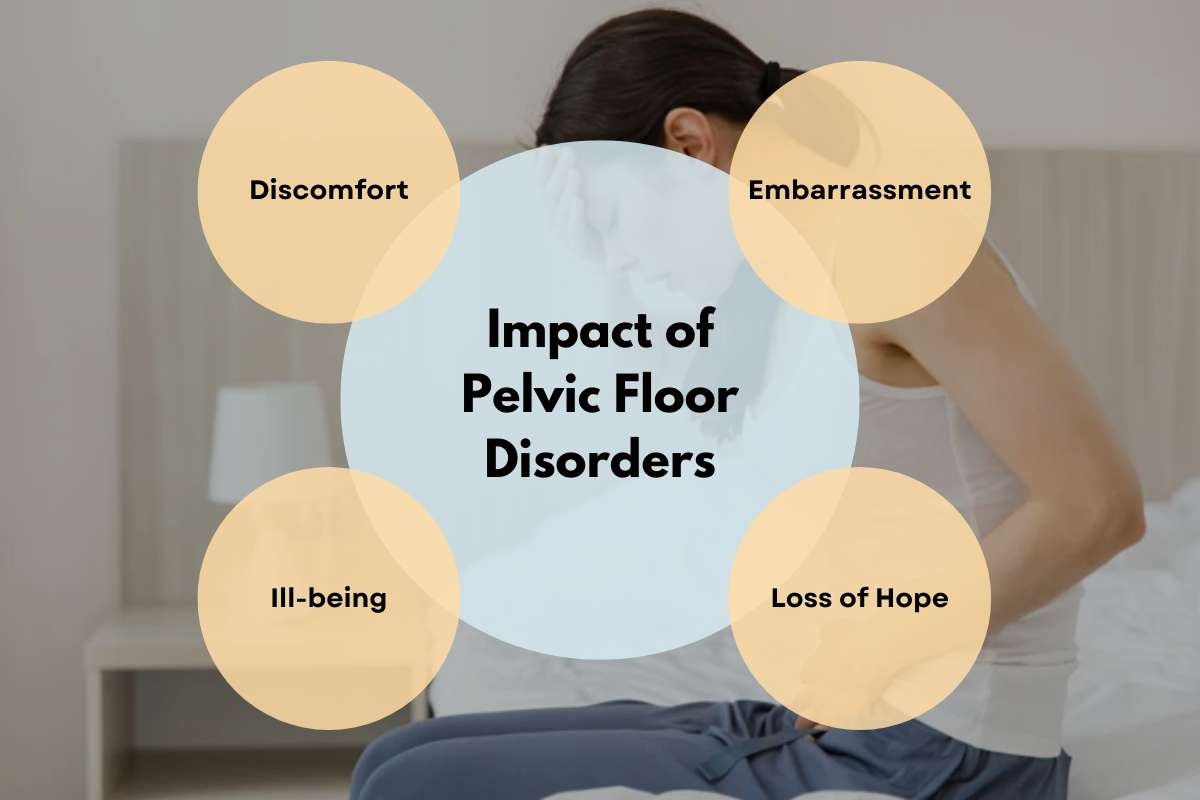Pelvic reconstructive surgery plays an important role in helping women suffering from pelvic floor disorders so that they can live a good quality life. Women experiencing symptoms like bladder leakage or pelvic support issues can become an obstacle in their daily lives, yet many suffer in silence due to the sensitive nature of these issues. With advancements in medical science and specialized programs like the Urogynecology and Reconstructive Pelvic Surgery Program, women now have knowledge and access to treatments and evaluations that allow them to live happier and healthier lives.
Impact of Pelvic Floor Disorders

Impact of Pelvic Floor Disorders
- Discomfort
- Embarrassment
- Ill-being
- Loss of Hope
Pelvic floor disorders affect several functions and organs within the pelvic region. Some of the most common conditions include pelvic organ shift, bladder leakage, and bladder dysfunction. Pelvic organ shift, for example, occurs when organs like the bladder or uterus slip out of place, causing discomfort and often becoming an obstacle in daily activities. Bladder leakage can range from mild to severe, it’s not only embarrassing but can impact a woman’s physical and mental well-being.
The Pelvic Reconstructive Surgery Program supports patients by developing personalized treatment plans, encouraging open discussions about symptoms, and providing hope for those who may have believed that no solution was available. These programs are a ray of hope to the patients and cure them with their specialized knowledge and by taking good care of them.
The Role of Pelvic Reconstructive Surgery
Pelvic reconstructive surgery comes into the picture when nonsurgical treatments are successful or when the patient’s condition is severe. Specialists in pelvic reconstructive surgery use gentle techniques to help patients heal faster and in less time.
Some of the common procedures include:
- Supportive slings for bladder control: This gentle technique involves placing a supportive sling under the urethra or bladder neck, which helps to reduce or eliminate urinary problems. The sling’s material offers support, resolves urinary problems, and allows patients to
- Vaginal Surgery for Pelvic Organ Shift: When pelvic organs like the bladder or uterus drop toward the vaginal opening, surgery may be necessary. Vaginal surgery can fix the falling by making small cuts inside the vagina, which helps to maintain the appearance and speeds up the recovery process.
- Gentle procedures and robotic surgery for Pelvic Organ Dropping: Advanced and gentle procedures with robotic techniques allow surgeons to make small abdominal openings. This reduces the recovery time and discomfort. Robotic surgery is useful for complex cases of pelvic organ shift.
Non-Surgical Options for Enhancing Quality of Life
Gentle treatments are preferred by many patients and so do doctors. Non-surgical treatments allow patients to see improvements in symptoms with less downtime.

Let us understand some of the best and most effective non-surgical treatments for pelvic floor disorders:
- Physical Therapy: This therapy is focused on pelvic muscles. It can treat issues like pelvic organ shift and urinary issues. It strengthens the pelvic floor muscles, and many women experience improvements in these symptoms.
- Pessary Use: A pessary is a removable device inserted into the vagina to support pelvic organs. This device can be useful for those with displacement, as it provides necessary support and may also reduce urinary issues.
- Biofeedback and Mind/Body Medicine: Biofeedback techniques help patients identify and control their pelvic floor muscles. Other techniques, such as meditation, can help patients manage symptoms associated with urinary issues and other bladder disorders.
Minimally Invasive Surgical Techniques

When non-surgical treatments are insufficient, pelvic reconstructive surgery is the next option. Surgeons in the field of urogynecology focus on gentle procedures, which include shorter hospital stays, reduced pain, and a return to normal life. Pelvic reconstructive surgery involves highly skilled professionals who specialize in these advanced surgical options, ensuring patients receive the best care possible.
- Slings for Incontinence: This procedure involves inserting a small piece of material under the bladder neck to support it.
- Robotic Surgery for Prolapse: Robotic-assisted surgery is one of the best, most precise, and most effective treatments for pelvic organ shift. This robotic approach allows the surgeon to access the pelvic area with greater control, minimal risks, and faster healing.
Final Thoughts
Pelvic reconstructive surgery offers hope to countless women who have silently endured the challenges of pelvic floor disorders. With access to specialized programs, women can find the relief they need and enjoy a quality life. By giving each patient individual attention and with the help of advanced treatments, pelvic issues can be resolved.
This surgery can open doors to a future filled with comfort and confidence, and one can start a new life. Patients gain access to physical and emotional support through highly skilled teams committed to their well-being. Pelvic reconstructive surgery may be the first step towards a life of improved health and freedom from discomfort and will help women move forward with strength and assurance.







